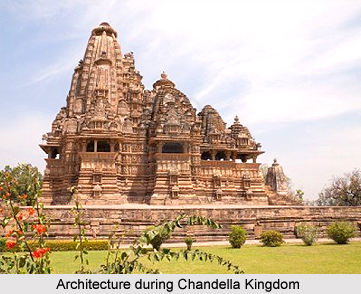 History of Panna district records the rich and glorious past of the district and the rulers who ruled over it. Engulfed in the magnificence of royal legacies of its past, the district of Panna in the Indian state of Madhya Pradesh is infectious, reverently mysterious, enveloping and holy.
History of Panna district records the rich and glorious past of the district and the rulers who ruled over it. Engulfed in the magnificence of royal legacies of its past, the district of Panna in the Indian state of Madhya Pradesh is infectious, reverently mysterious, enveloping and holy.
The oldest reference to the Panna district is seen in the great Hindu Epic Ramayana written by the sage Valmiki and several Indian Puranas. The ancient name of this district was Padmawati-Puri, mentioned in the Vishnu Purana and Bhavishya Purana. In the 41st sarg of Valmiki Ramayana it is described as Kilkila-Khand by Sugreev and Shrimad Bhagwat calls it Kilkila Pradesh. As per the local belief, it was the capital of Raja Dadhichi and of Raja Padmavat during "Satyug". Swami Pran Nathji who told Budelkhand Kesri Maharaja Chhatrasal (a Bundeli warrior who chose to turn against one of the well famed Mughal Emperors, Aurangzeb and seek to establish his own kingdom in Bundelkhand), regarding Diamond mines of Panna. Thus, he strengthened his financial position. He also persuaded Chhatrasal to make Panna his capital and arranged his coronation there.
The district formed a part of the vast Maurya Empire, Sunga Dynasty and Gupta Empire. From the middle part of the 10th century AD to the second half of the 13th century, the kingdom of Chandella Dynasty included Kalingar, Khajuraho and Ajaigarh. When the Bundelas came to power in the 17th century, the area came to be known as Bundelkhand.
The Panna district of today has been carved mainly out of former princely state of Ajaigarh and princely state of Panna. It was originally a Gond Tribe settlement up to the thirteenth century. Later this district raised its to importance by Raja Chhatrasal Bundela who made it his capital. From explorations of the Archaeological survey of India, it is proved that primitive men inhabited the district of Panna in the earlier pre-historic period. During period of the Ramayana, the Panna region seems to have been included in the great Dandkaranya.
Later in 19th century, the kingdom of Panna went to Harde Sah, the eldest son of Bundel warrior Raja Chhatarsal. From that time, the Panna district became a princely state of British India. It gained control to the states of Sohawal and Nagod. Raja Nirpat Singh assisted the British East India Comapny in the Sepoy Mutiny 1857. Later after 1858, when the British Government took the total possession on India, they rewarded him with the title "Maharaja". After the Independence of India in the year 1947, Maharaja Mahendra Yadvendra Singh agreed to surrender to the Government of India on January 1, 1950. From that, time onwards, the Panna District of the new Indian state of Vindhya Pradesh. Vindhya Pradesh was merged into Madhya Pradesh on November 1, 1956.



















